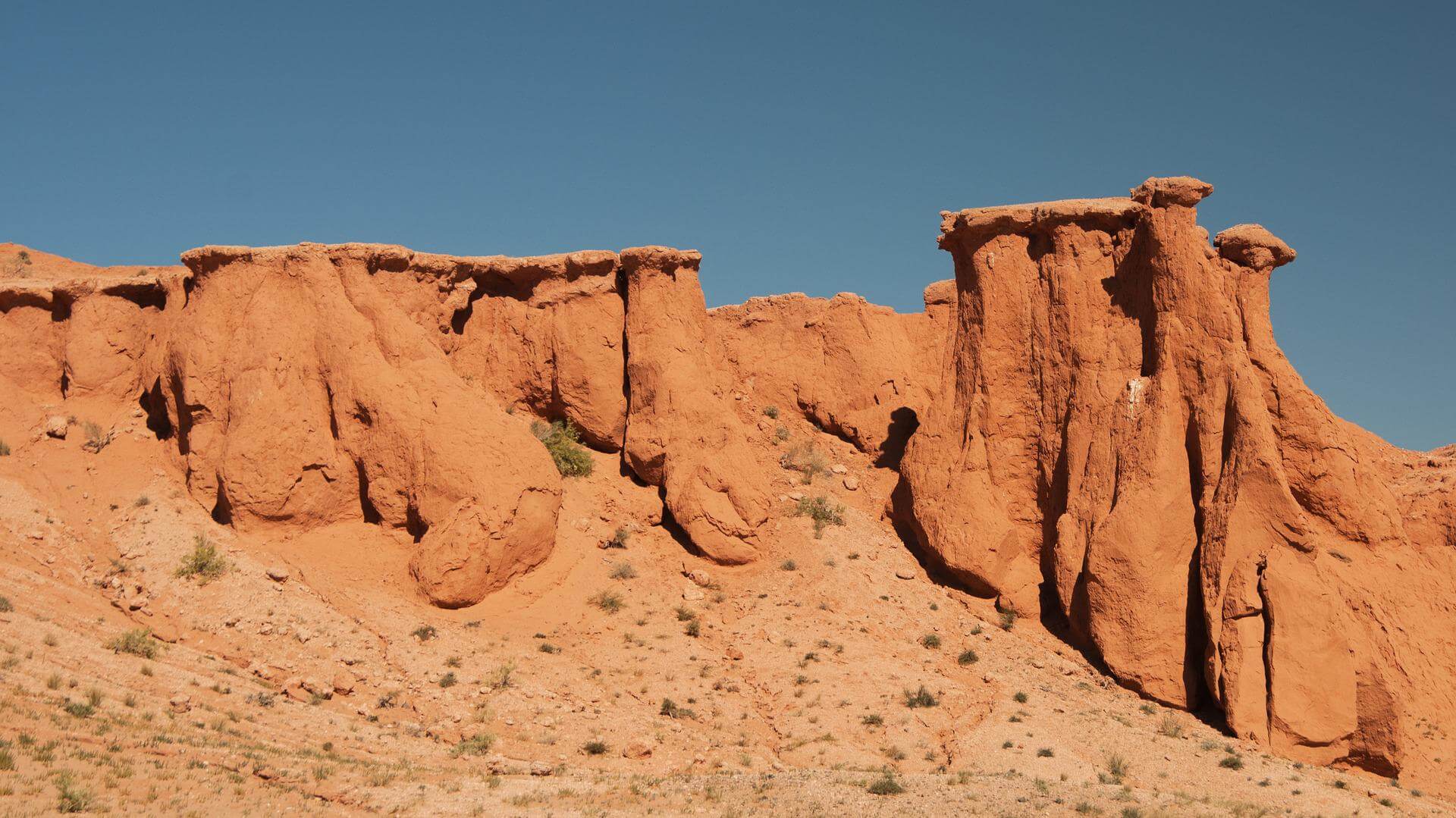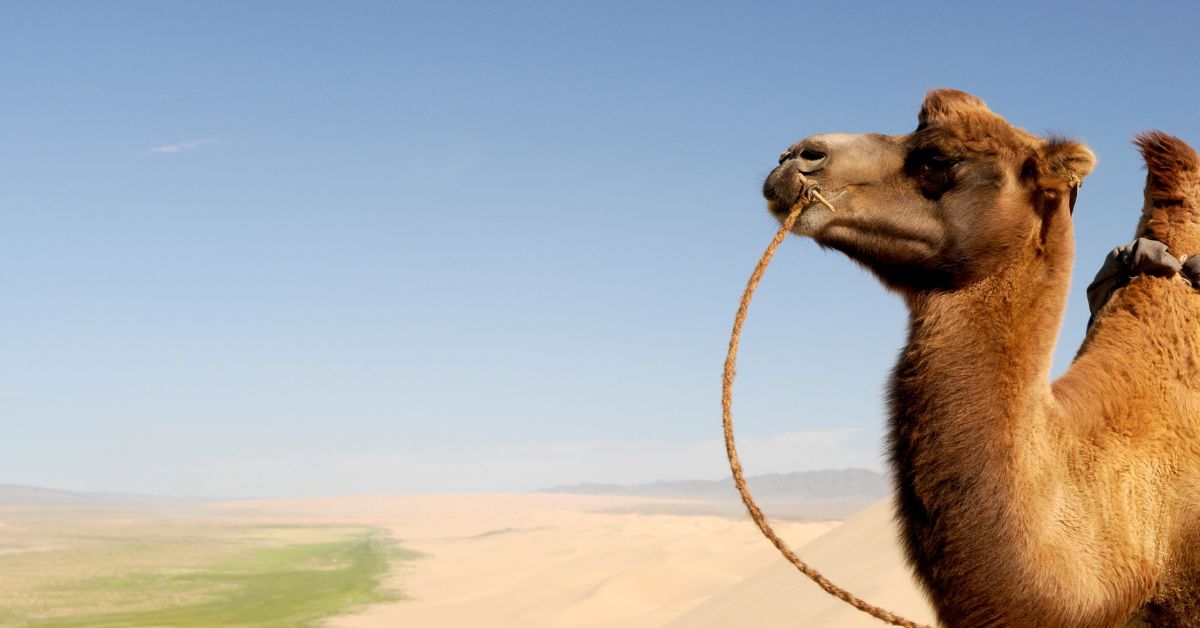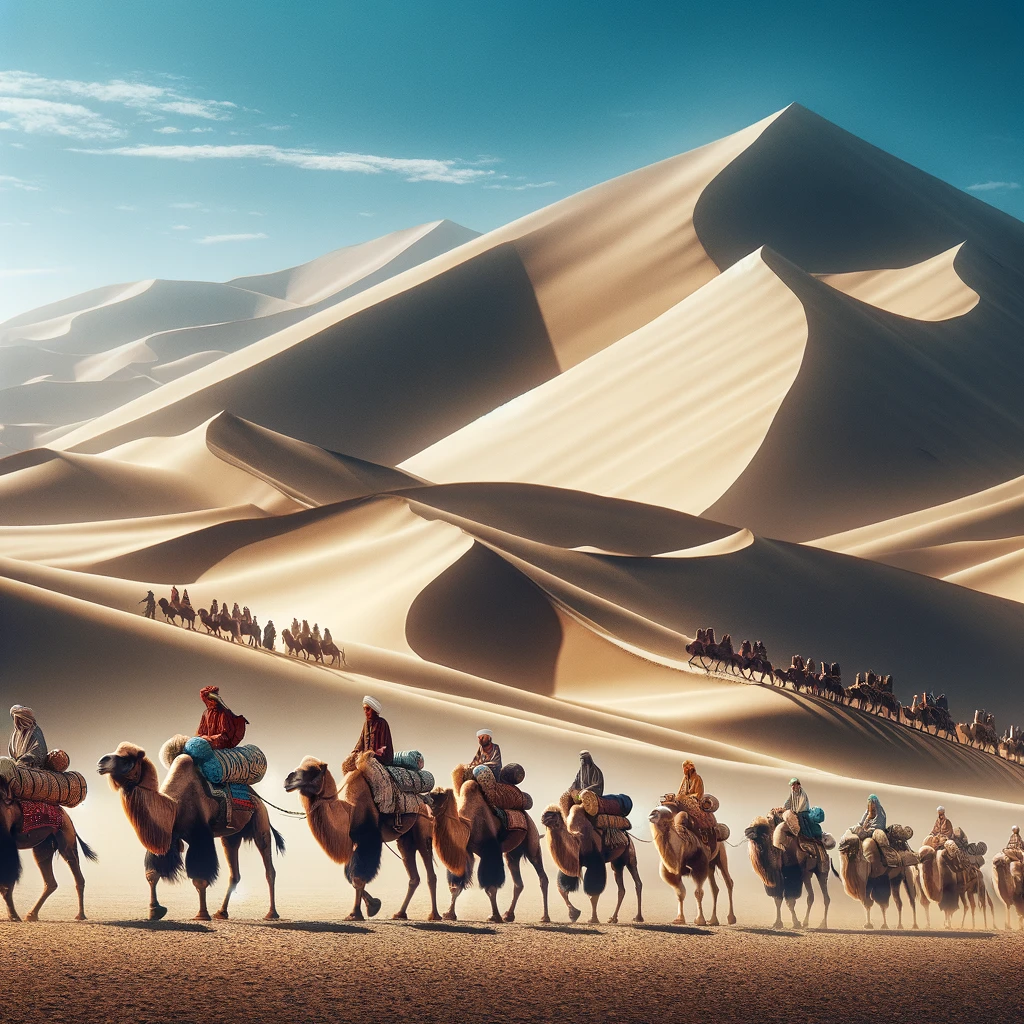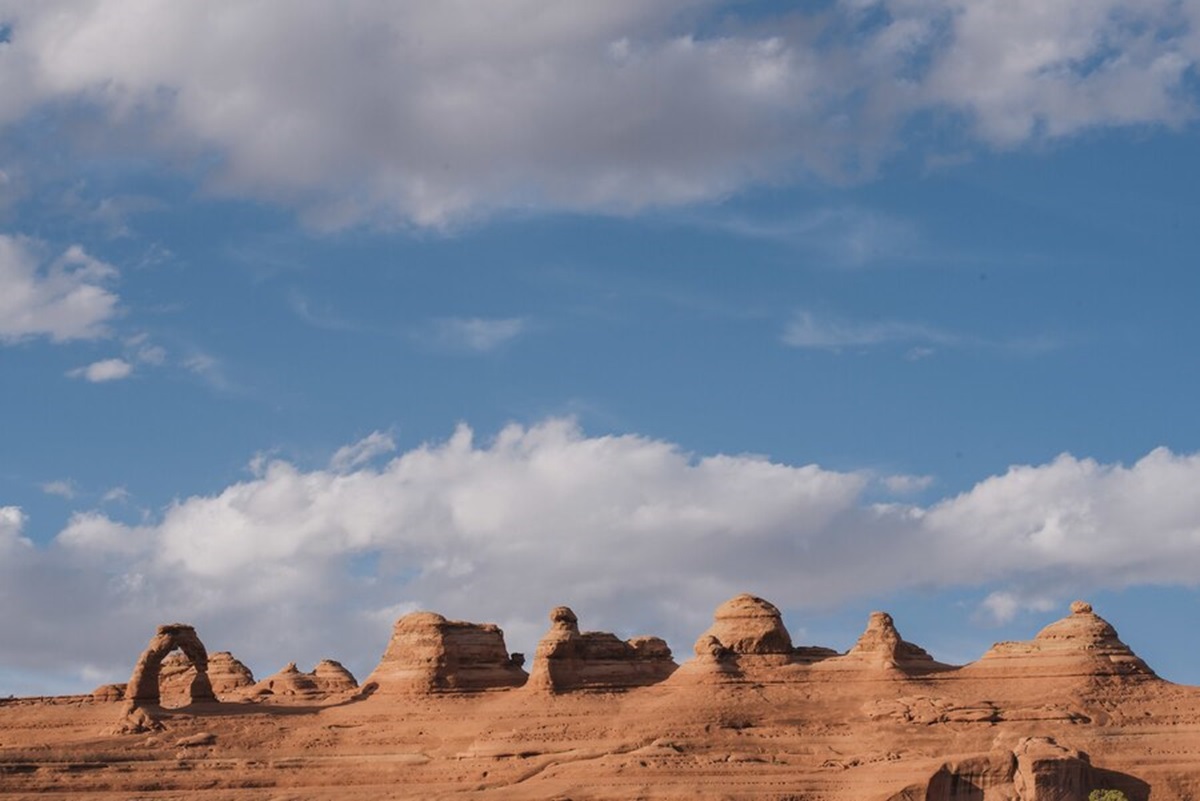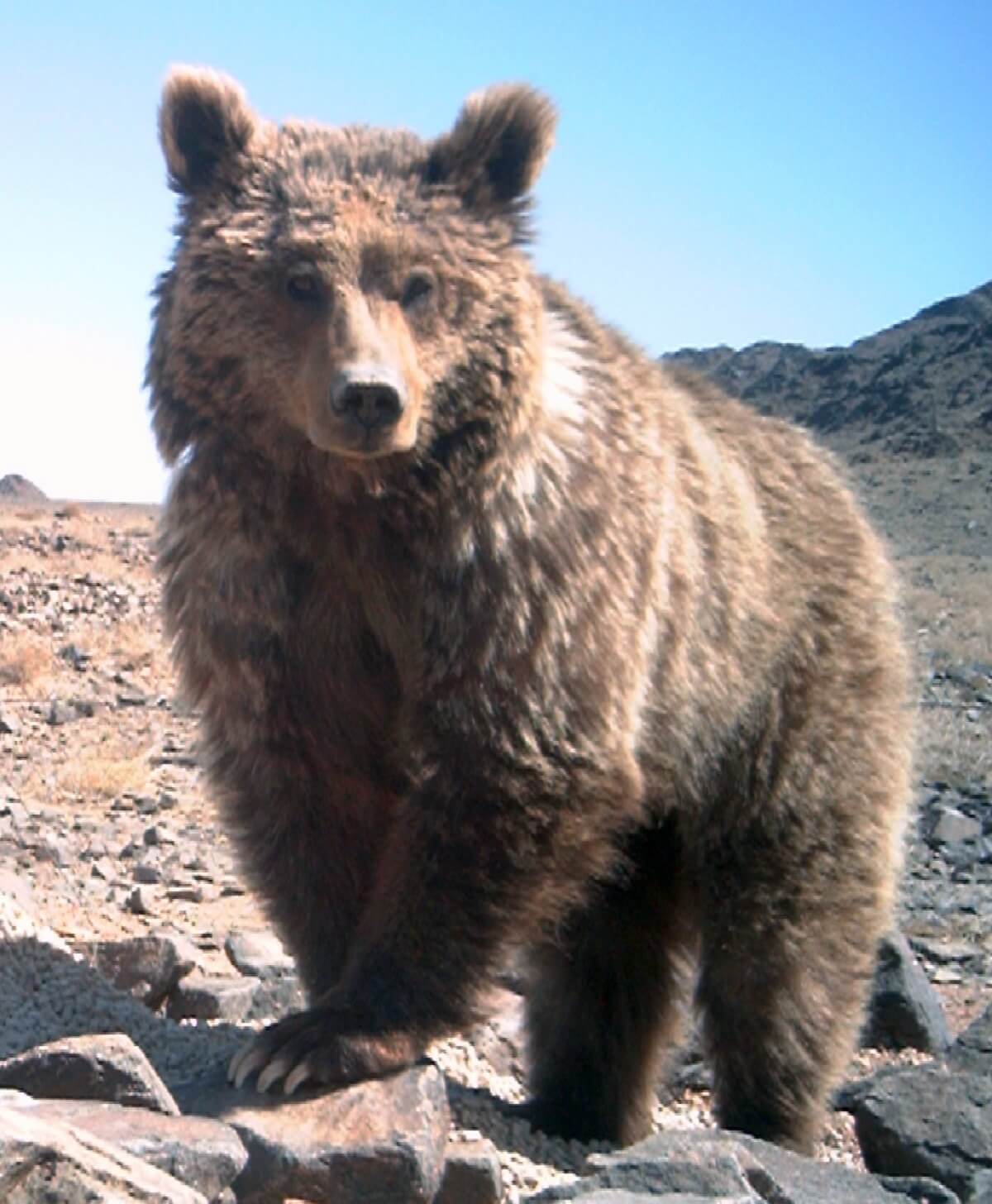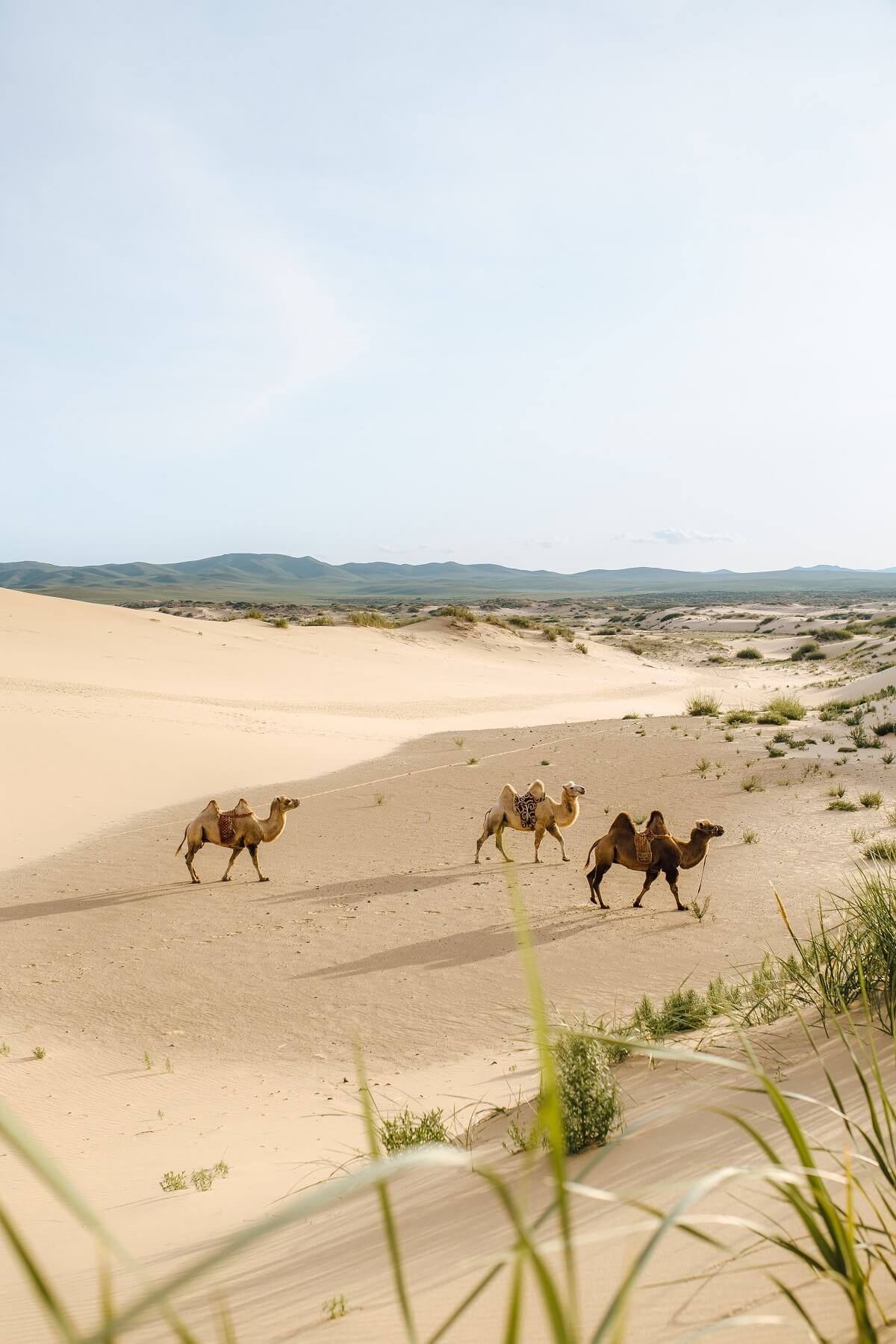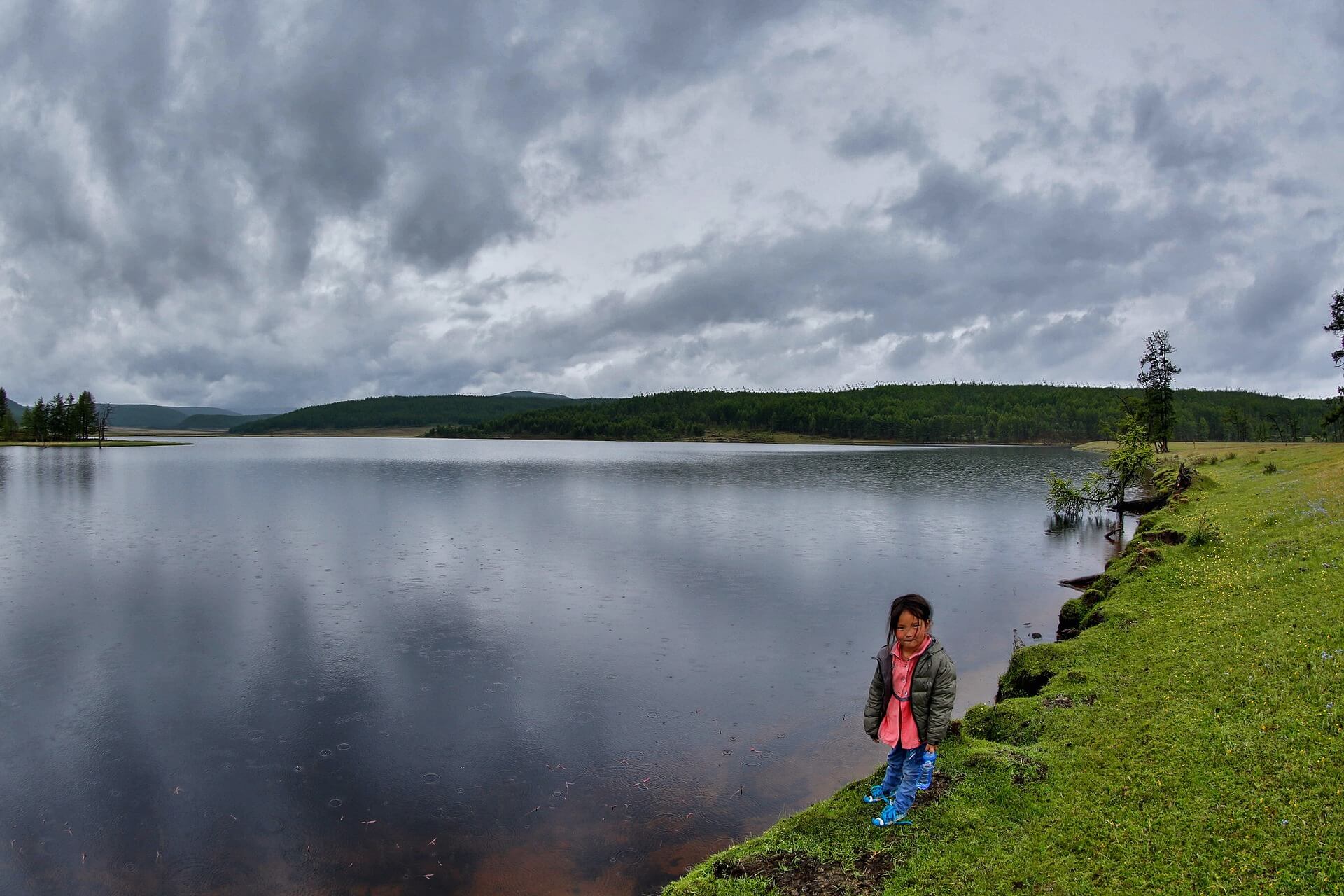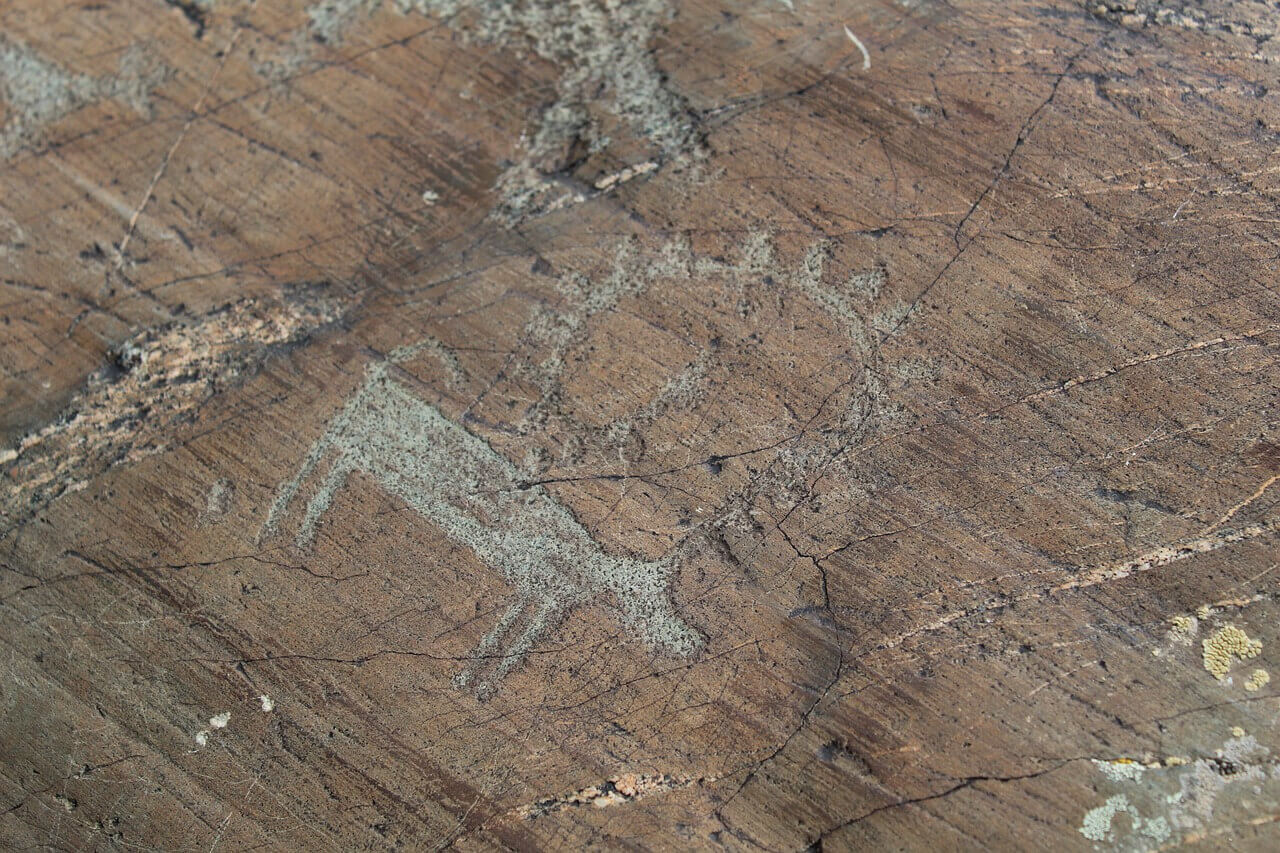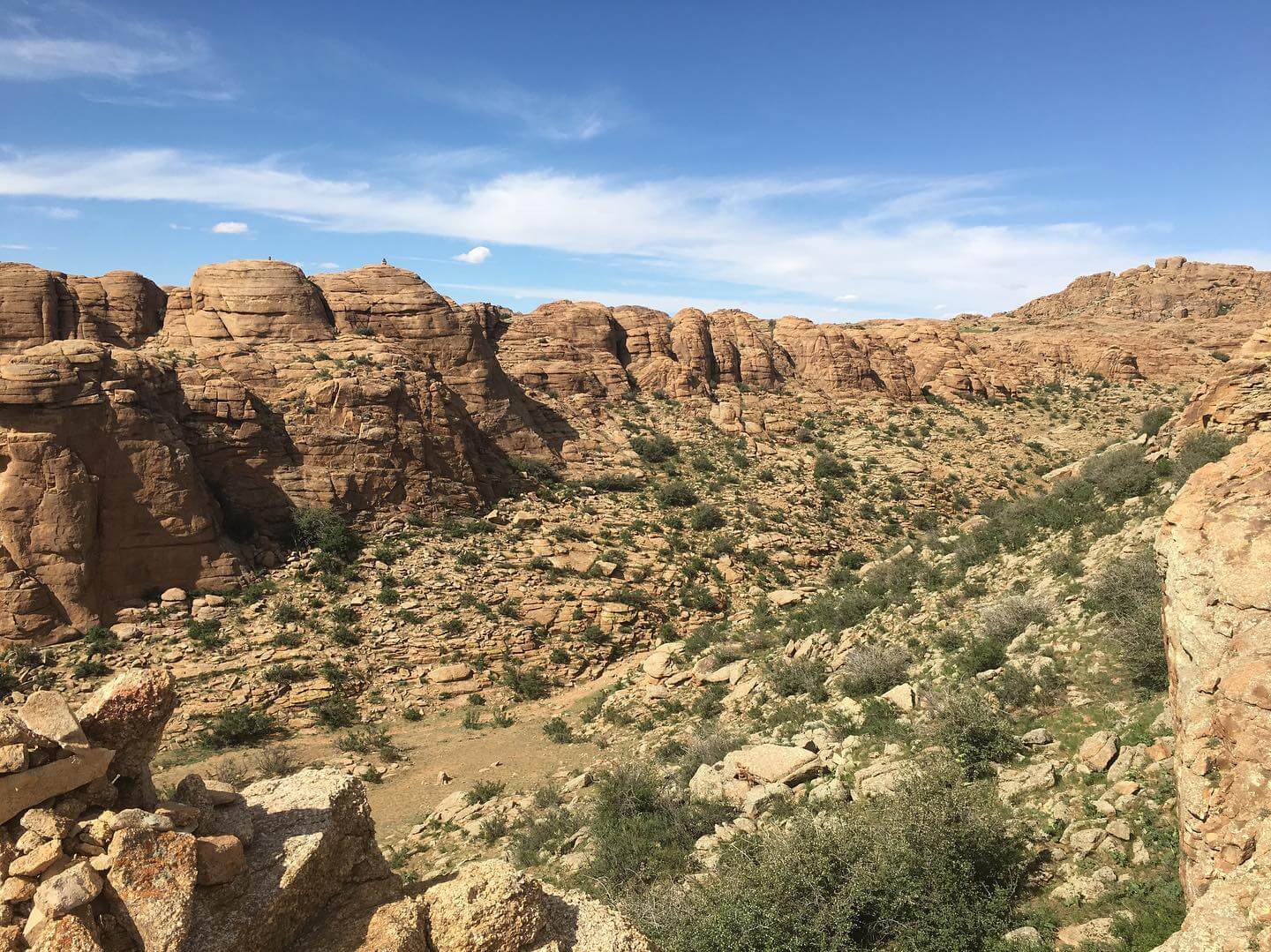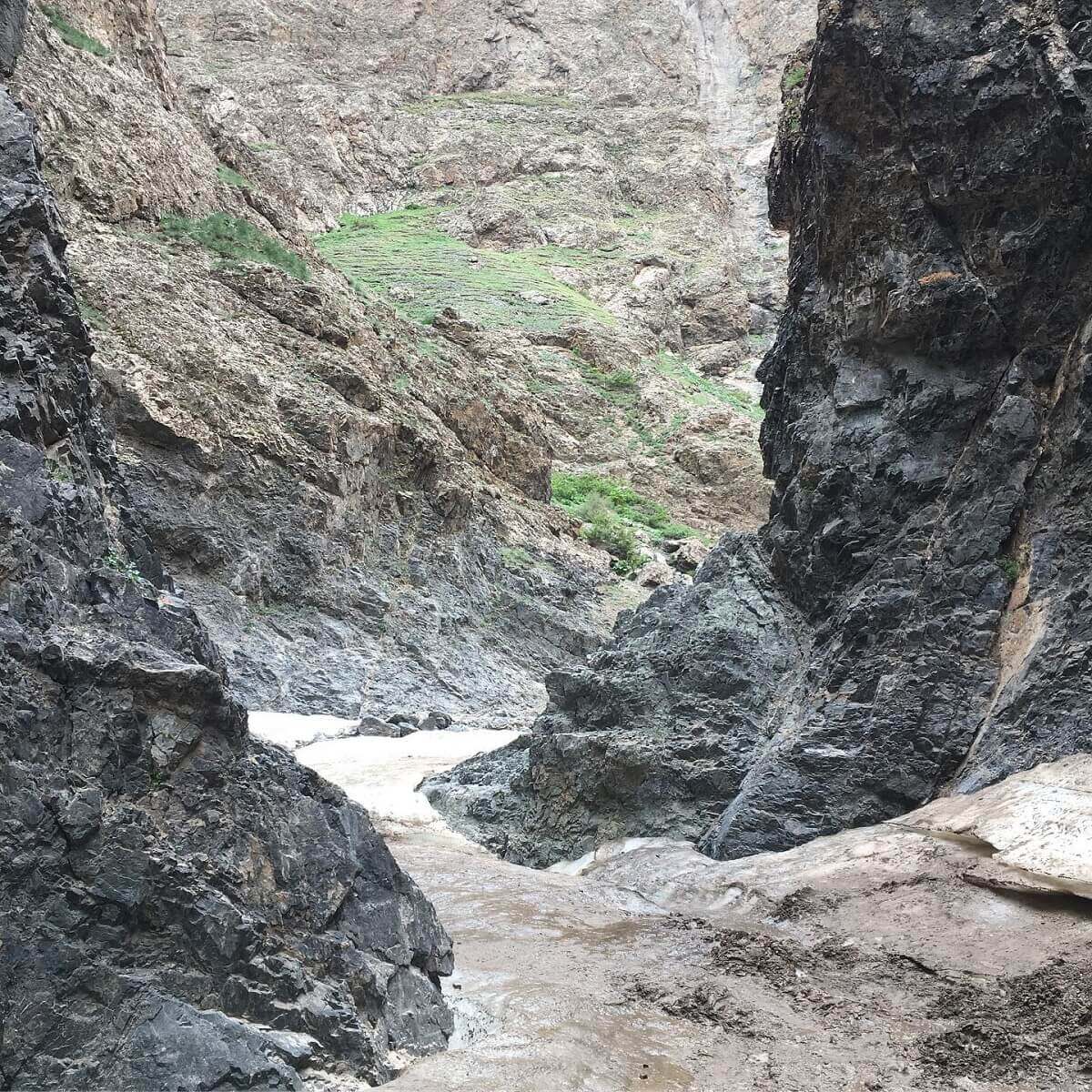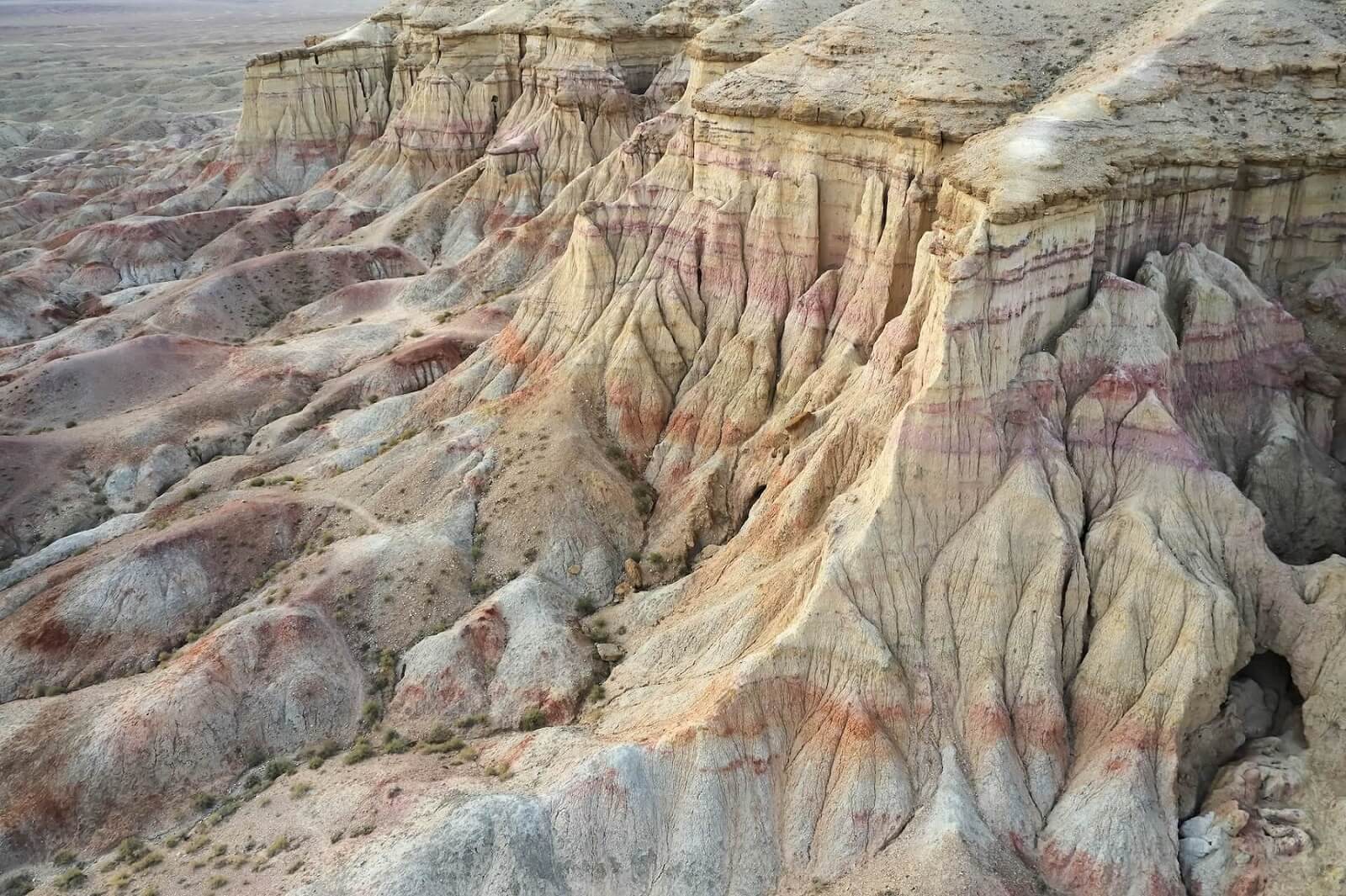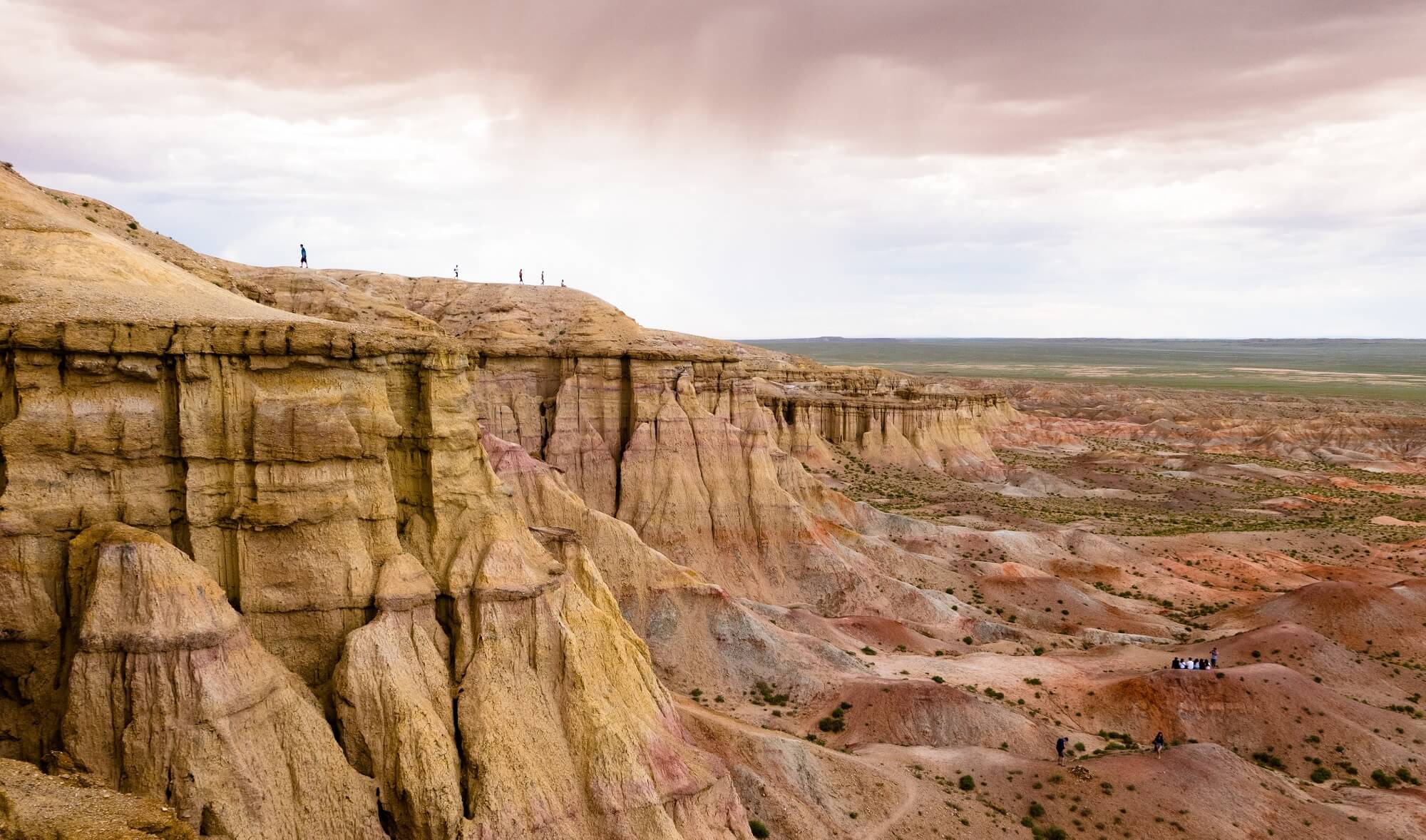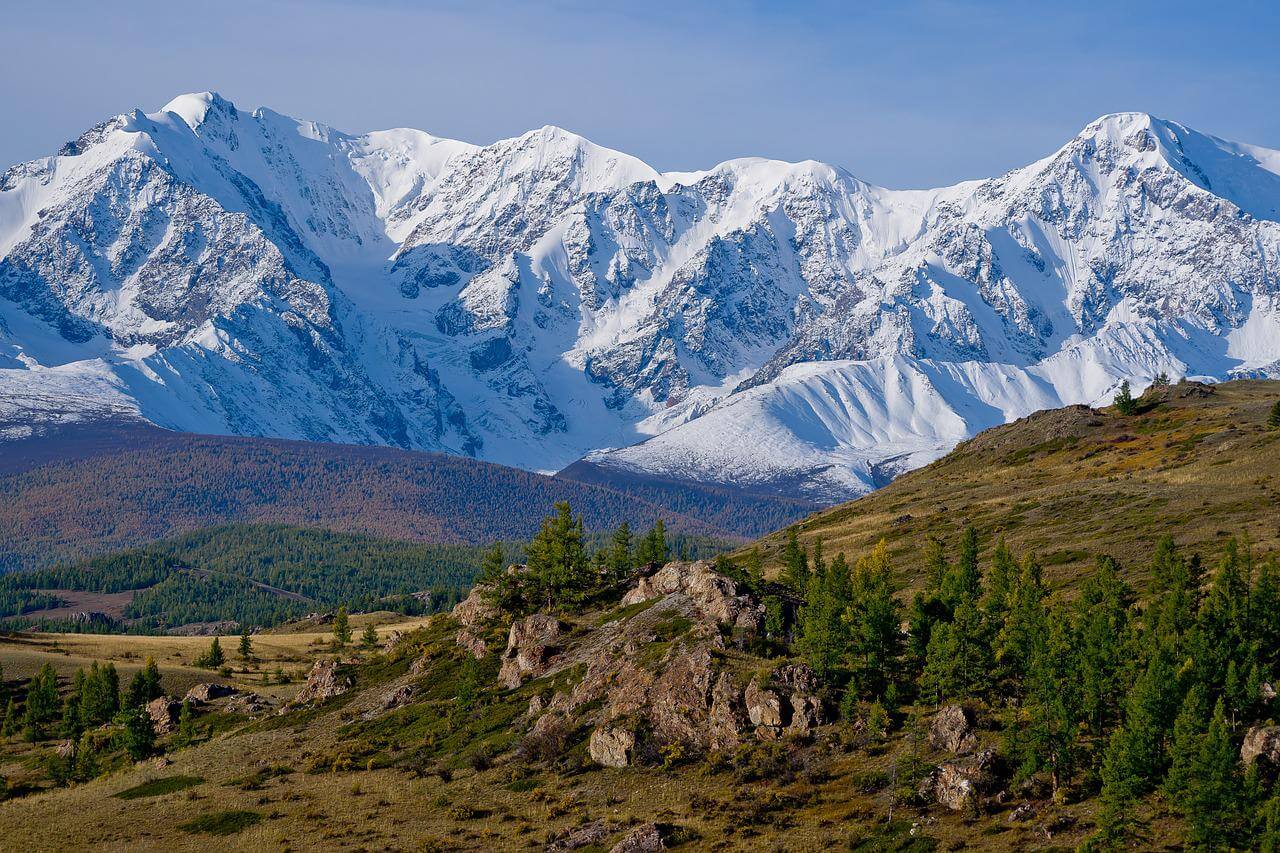Mongolia Dinosaur Fossils
Mongolia is a land of extremes. From the snow-capped mountains in the north to the Gobi Desert in the south, this country is full of surprises. And one of those surprises is that Gobi Desert is home to some of the best dinosaur fossils in the world.
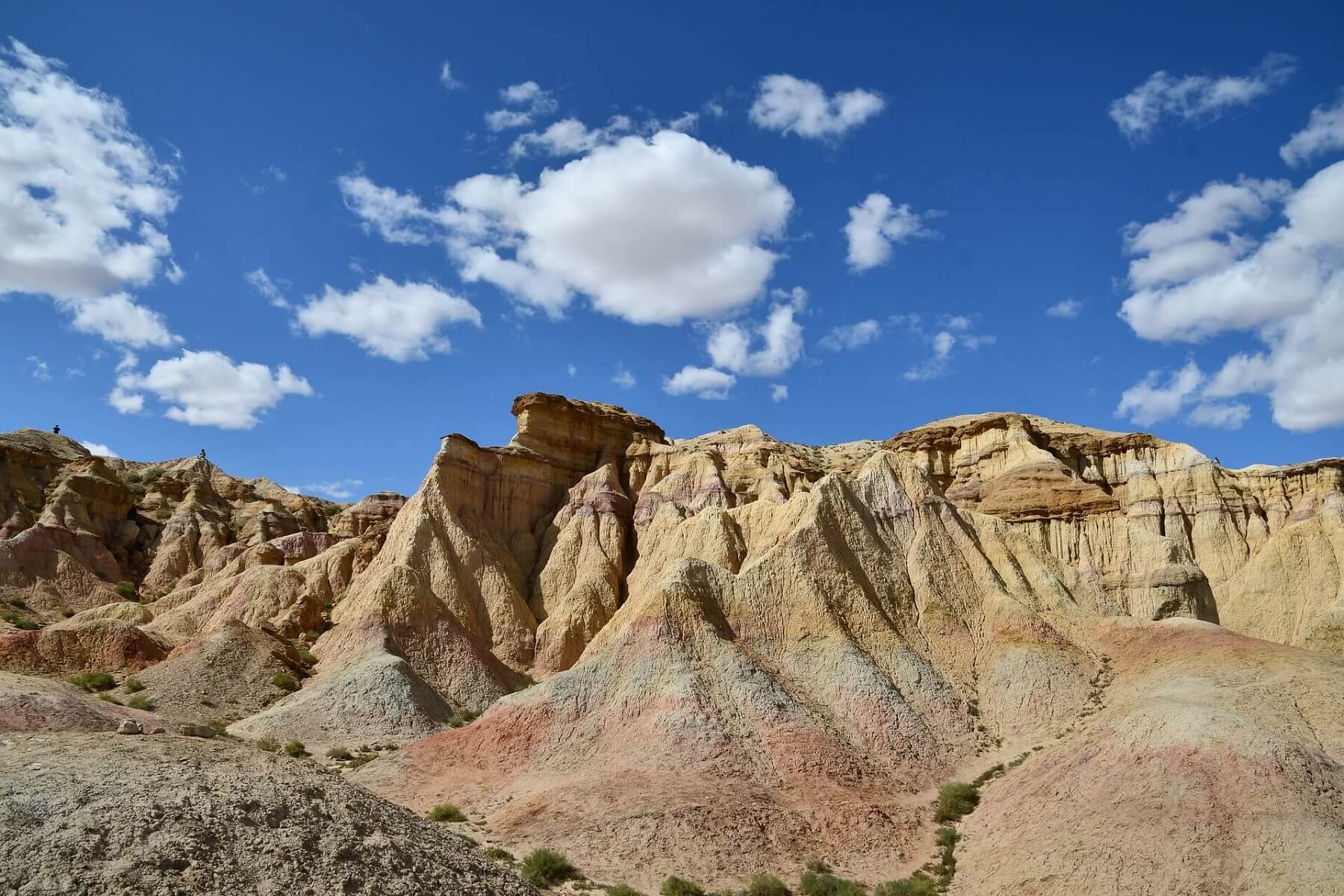
Mongolia has been a hotbed for paleontological activity for years, and it’s yielded some amazing finds. In fact, many of the most famous dinosaurs in the world, like Velociraptor and Oviraptor, were first discovered in Mongolia.

And there are still new species being found all the time. You can see Here are a few fascinating facts about Mongolia’s dinosaur fossil.
#Fact 1 About Gobi Desert, why so many dinosaur fossils are found there?
Eighty million years ago, during the Cretaceous Period, the largest desert in Asia the Mongolian Gobi Desert was once paradise for plants and dinosaurs with freshwater lakes and a humid climate. Some paleontologists say that the site was also a place of mass extinction.
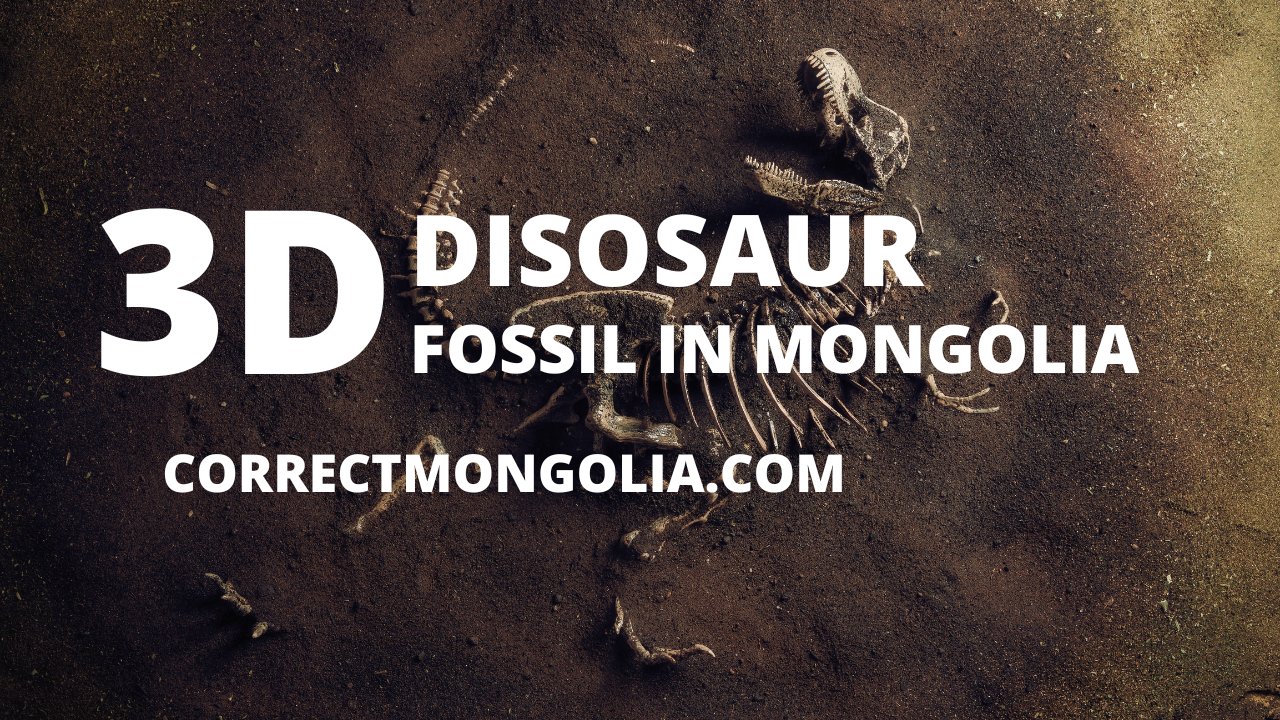
This is where suddenly sand-slides both swept away dinosaurs and preserved their remains. The Gobi region is unique because it lies in the shadow of the Himalayas. This means that clouds cannot reach the desert, making it a barren landscape.
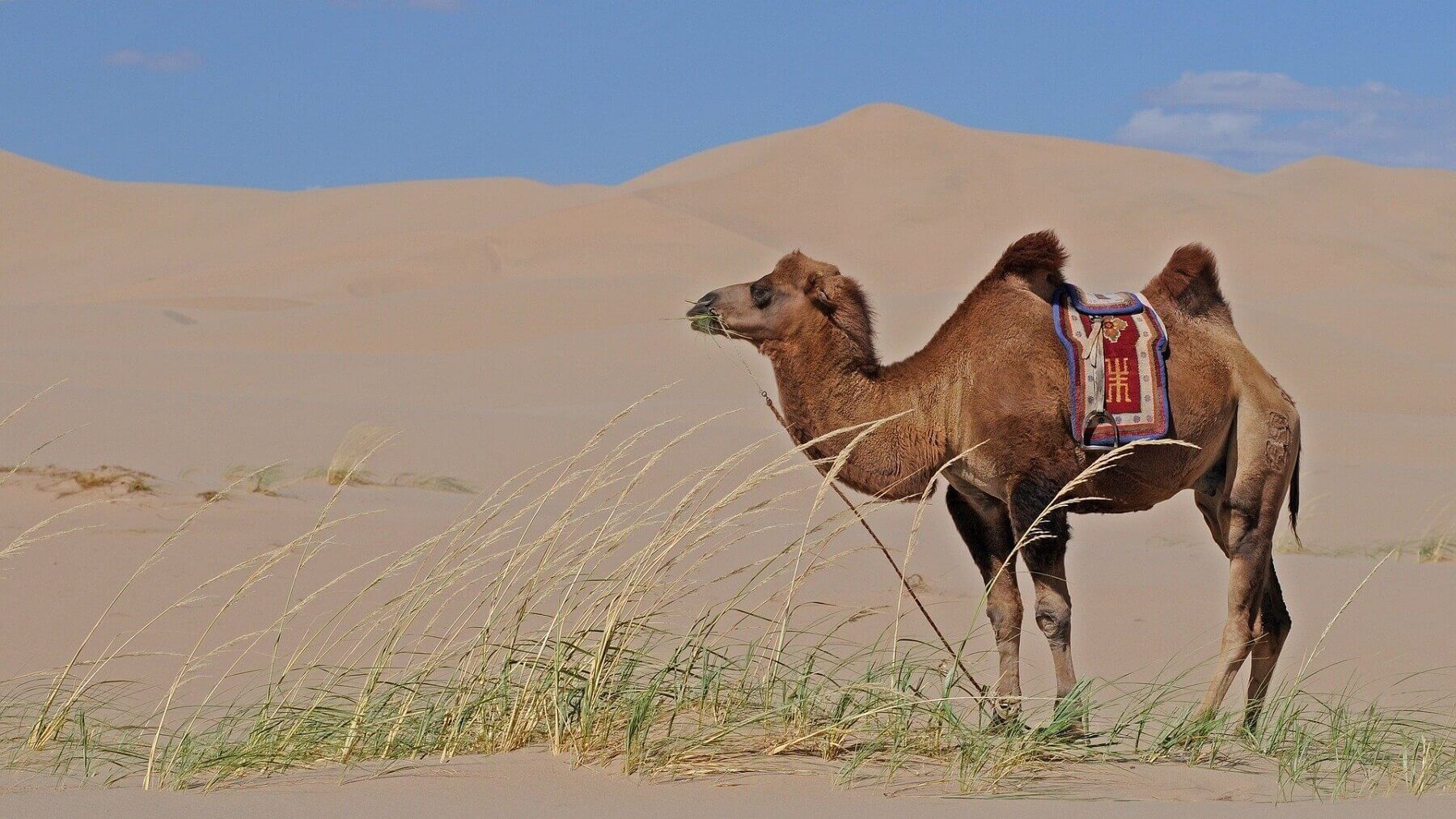
Today, though, thanks to the desert’s barren landscapes, paleontologists have found so many incredible fossils exposed at surface level, making the Gobi the largest dinosaur fossil reservoir in the world. The rocks from the lush dinosaur age are already ready to be explored.
Fact 2 – Dinosaur eggs of Mongolia, how it changed the world?
In 1920, the American Museum of Natural History and its director Roy Chapman Andrews led a paleontological expedition into the Gobi Desert to find proof of early humans. They didn’t find any humans, but what they found changed the world’s understanding of dinosaurs.
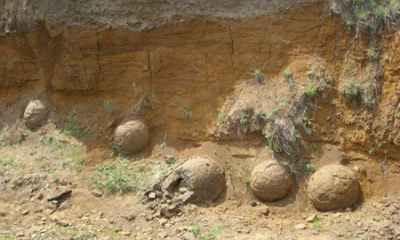
The team discovered the first-ever fossilized dinosaur egg. This was a huge moment in paleontology, as it showed that dinosaurs laid eggs, just like birds do today. The discovery also led to the theory that birds are actually descendants of dinosaurs.
In just two years, his expedition team discovered over 100 dinosaurs and carried them back to the American Museum of Natural History, where several still stand today. Little is left to commemorate this event in Bayanzag, which has been renamed the Flaming Cliffs.
One thing to keep in mind is: Unlike in the United States and the United Kingdom, where a finders keepers law applies if you come across a T. rex remains, in Mongolia, as with Brazil and China, any fossils discovered are government-owned and exports are strictly prohibited. Fossil poaching will put you in jail.
#Fact 3 Dinosaurs found in Mongolia , what were some of the famous ones?
Mongolia has been a hotbed for dinosaur research for years, and it’s yielded some amazing finds. In fact, many of the most famous dinosaurs in the world, like Velociraptor and Oviraptor, were first discovered in Mongolia. World famous fossils include:

The dromaeosaurid theropod Velociraptor, better known to most as the star of the Jurassic Park movie franchise, was discovered by Andrew’s team member Peter Kaisen in 1923. What he found were a complete skull and toe claw.

In 1971, a Polish-Mongolian team discovered one of the most famous fossils ever found: “Two fighting dinosaurs.” It was Velociraptor, pictured with Protoceratops in an attack pose.

Oviraptor (meaning egg plunderer)is a genus of small Mongolian theropod dinosaurs. When living, Oviraptor was one of the most bird-like of the theropod dinosaurs.
Oviraptor’s name comes from the first fossil of it that was found. It was found on top of eggs that belonged to a different kind of dinosaur, called Protoceratops.
Scientists thought that Oviraptor was trying to steal the eggs, but they later found out that the eggs actually belonged to Oviraptor. This was some of the first evidence of dinosaur eggs being found.
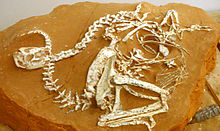
Male and female members of another Oviraptor relative, Khaan, were discovered together by the American Museum Expeditions. They were dubbed “Romeo and Juliet” after their discovery.

Protoceratops andrewsii, small hornless relative of Triceratops, was one of the new species of dinosaurs found in the Flaming Cliffs.
- It’s a small herbivore with frills on its head and neck. It walked around on four legs like Triceratops, had a large frill, a bony extension of the skull that covered the neck, and a beak. However, it didn’t have Triceratops’ Horns.
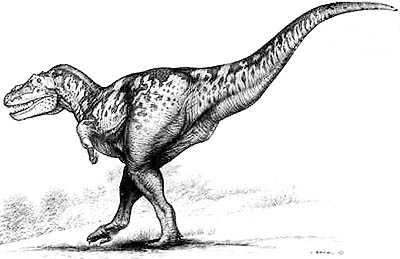
Tarbosaurus, often called Asian T.rex or T-Bataar, was a close relative of Tyrannosaurus rex and the king of the Late Cretaceous in Mongolia–just as its counterpart was king in North America. This massive carnivore could grow up to 40 feet long and weighed over four tons!
The Tarbosaurus bataar was found in the Gobi Desert by a Soviet-Mongolian expedition in 1946. This giant carnivorous Tarbosaur is relatively abundant compared to other fossils and has well-preserved characterisitcs. In fact, 25% of all fossils collected from the Nemegt Formation are Tarbosaurus bataar.
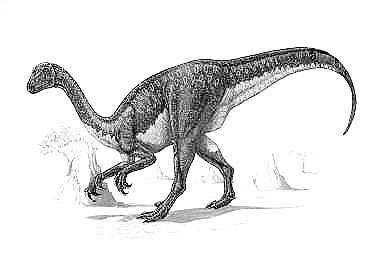
Therizinosaurus is one of the oddest dinosaurs known today. We have only found fossils of its arms and legs, but they were very large with enormous claws. It was a plant eater whose diet consisted mostly of leaves and greens.
When the first arm fossil was discovered, scientists thought it belonged to a turtle! However, further research led them to conclude that it actually belong to the Therizinosaurus dinosaur species which was discovered in 1948 by a joint Soviet-Mongolian expeditionary team.
- Zanabazar was a troodontid dinosaur named after the first spiritual head of Mongolia. It lived during the late Cretaceous period in what is now Mongolia. Zanabazar was a carnivore. At the time, it was the largest Asian troodont and was originally classified as a Saurornithoides.
In 1974, Rinchen Barsbold discovered remains of Zanabazar in the Bugeen Tsav area of the Nemegt Formation, which has been dated to approximately 70 million years ago.

In addition to these dinosaurs, more than 80 dinosaur genera—or one fifth of the known 400—have been discovered in the Mongolian Gobi during 100 years of research. These finds have helped scientists better understand how dinosaurs lived, moved and behaved. The Gobi Desert is truly a dinosaur fossil goldmine!
#Fact 4 Places you can travel to see the Mongolian Dinosaur fossils
Flaming Cliffs is not the only place in the Gobi where incredible discoveries have been made. The Nemegt Basin and its Nemegt Formation are home to one of the most bizarre dinosaurs ever found. And there are plenty more place to see Mongolia dinosaur fossil. Here are five of the best:

Bayanzag / Flaming Cliffs
Paleontologist Roy Chapman Andrews, who led the Central Asia Expedition organized by the American Museum of Natural History in the 1920s, named the area Flaming Cliffs because of the bright orange color of the cliffs. The color is especially pronounced at sunset.

Locals also call this place Shiree Shavar and Bayanzag in the documents of the Central Asian expedition. Bayanzag is a historical and cultural site that is protected by the state for its significance: it was where the first dinosaur egg was discovered.
Naran Daats
Naran Daats, situated in the northwest of Three Tes Sum, is a beautiful oasis composed of elm trees, poplars, and cypresses. This oasis is also home to a rare fossil called Palendlo.
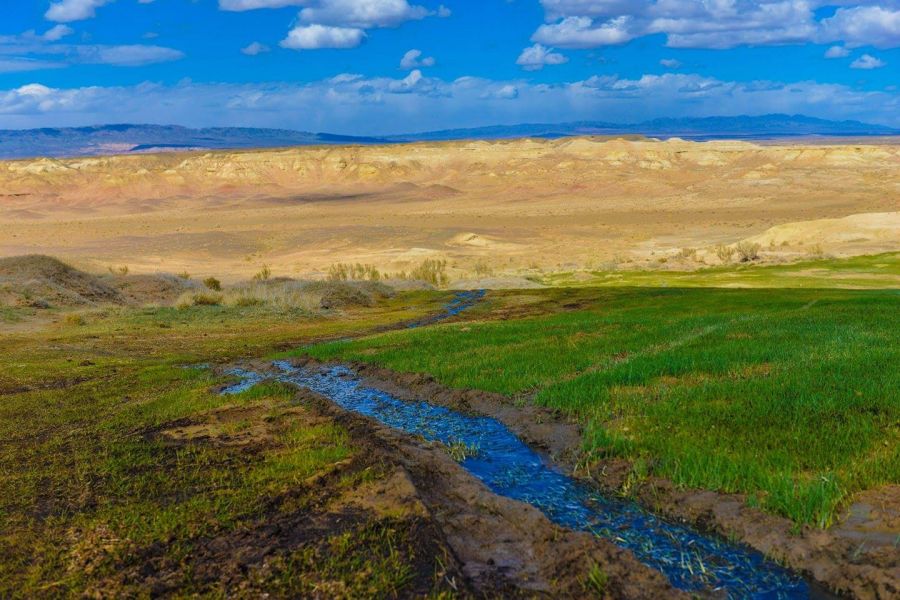
The Govi oasis, which is made up of Upper Cretaceous sediments, is the main reserve of clean drinking water in this area. Bones from dinosaurs such as Therizinosaurus, Zabrosaurus , Tarbazabra , Horned Dinosaur , Pinacosabra , etc., have been found here.
Tugrugiin Shiree
The Togrogiin shiree is a hill with an elevation of approximately 30 meters. You may go northwest to the Togrogiin shiree directly from the Bayanzag northern edge. Dinosaur bones have been discovered on the seat wall and jut out from it.
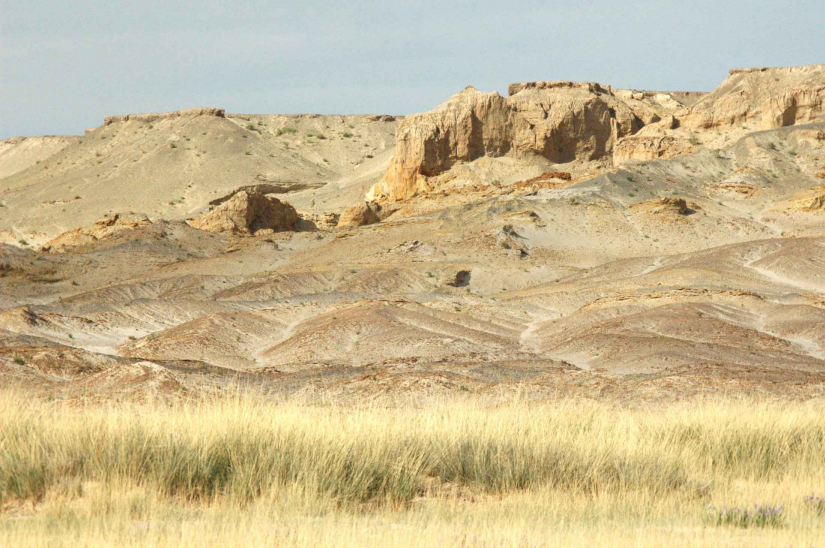
Fossilized dinosaur eggs with articulated skeletons of infant dinosaurs have been discovered here. Marshes surround Togrogiin shiree, and there is a hill to the south-west named Togrog spring, while mud flats surround it to the north-east and south-west
Nemegt Mountain
When you stand at the top of Nemegt mountain plateau, all you can see are endless canyon walls. The main canyon has three branches, and when you get there, it feels like you’ve stepped into a fairytale world.
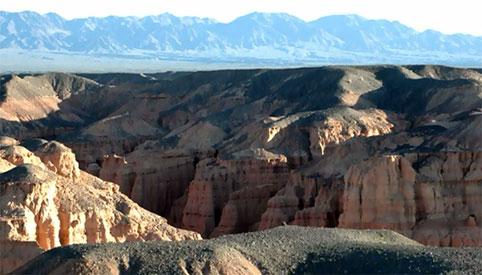
The weathered walls looklike houses with various windows and balconies. And it’s amazing to se dinosaur bones sticking out from those same walls.
Nemegtsaurus, a carnivorous dinosaur, is still famous today after its remains were found in Nemgt valley. Some scientists have even taken to calling the site “dragon’s grave.” However, it can be difficult to find fossils from the upper layers of Nemgt Mountain because scientists have already excavated and cleaned the area.
Khermen Tsav
Khermen Tsav is a 100-200-meter-deep ravine with a length of more than 10 kilometers. It is the largest cave in Mongolia, and it is a beautiful area with an oasis of elm trees and in its vicinity.
Valuable paleontological finds such as therizinosaurus, zabrolozh, tarbazabra, horned dinosaur, pinacosabra, etc. have been found here.
It can get quite hot in the summer, with temperatures reaching +40-+50 degrees Celsius. The extreme heat of this scorching air makes cars extremely hot. If you are planning a trip, make sure to have an abundance of water, healthy snacks and set up all the right communication tools before leaving.
So, there you have it! Five of the best places to see Mongolia dinosaur fossils. Mongolia is an incredible place with a rich history and culture.
Even in Ulaanbaatar, capital city of Mongolia, you can learn more about dinosaur from Mongolian Natural Museum or Central Museum of Mongolian dinosaurs. And if you’re a fan of dinosaurs, it’s definitely worth a visit!
Frequently Asked Questions
Did dinosaurs live in Mongolia?
Yes, Mongolia was once home to many different kinds of dinosaurs.
What dinosaurs were found in Mongolia?
Some of the most well-known dinosaurs that have been found in Mongolia include Nemegtsaurus, Therizinosaurus, Zabrosaurus, Tarbazabra, and Horned Dinosaur.
Why are so many dinosaurs found in Mongolia?
Among the many other features, there are incredible tracts of exposed Cretaceous rock in spots with no vegetation. Dinosaur bones are plentiful, and finding them is rather simple.
Did dinosaurs live in Gobi desert?
The Gobi desert was once a lush, green area with many rivers and lakes. It is thought that the dinosaurs that lived there died out due to a combination of climate change and volcanic activity.
What did scientist find in the gobi desert in 1923?
The first dinosaur fossil was found in the Gobi desert in 1923 by a Mongolian scientist named Roy Chapman Andrews. He and his team discovered the remains of a Velociraptor.
Where is the fighting dinosair fossil?
The fighting dinosaurs fossil was found in Mongolia in 1971. It is currently on display at the American Museum of Natural History in New York.
What was the largest dinosaur?
The largest known dinosaur is Argentinosaurus, which was discovered in Argentina. It was estimated to be around 100 feet long and weigh over 100 tons. Mongolia’s Tarbosaurus may have been a close second, with an estimated length of 40-50 feet.
What dinosaurs lived in the desert?
Some of the dinosaurs that have been found in Mongolia’s Gobi desert include Velociraptor, Oviraptor, Protoceratops, and Therizinosaurus.
Hello. My name is Anujin. I was born and raised in Ulaanbaatar, the capital city of Mongolia. I am senior writer at CorrectMongolia, where I share the culture , tradition of my country.
If you have questions about Mongolia, don’t hesitate to ask. I’ll be happy to help in any way that I can!
Related Tour:
Gobi Desert Tour & Travel 7 days 8 nights
Related Content:
Share to Public

